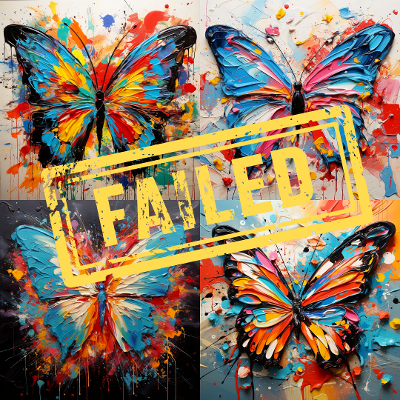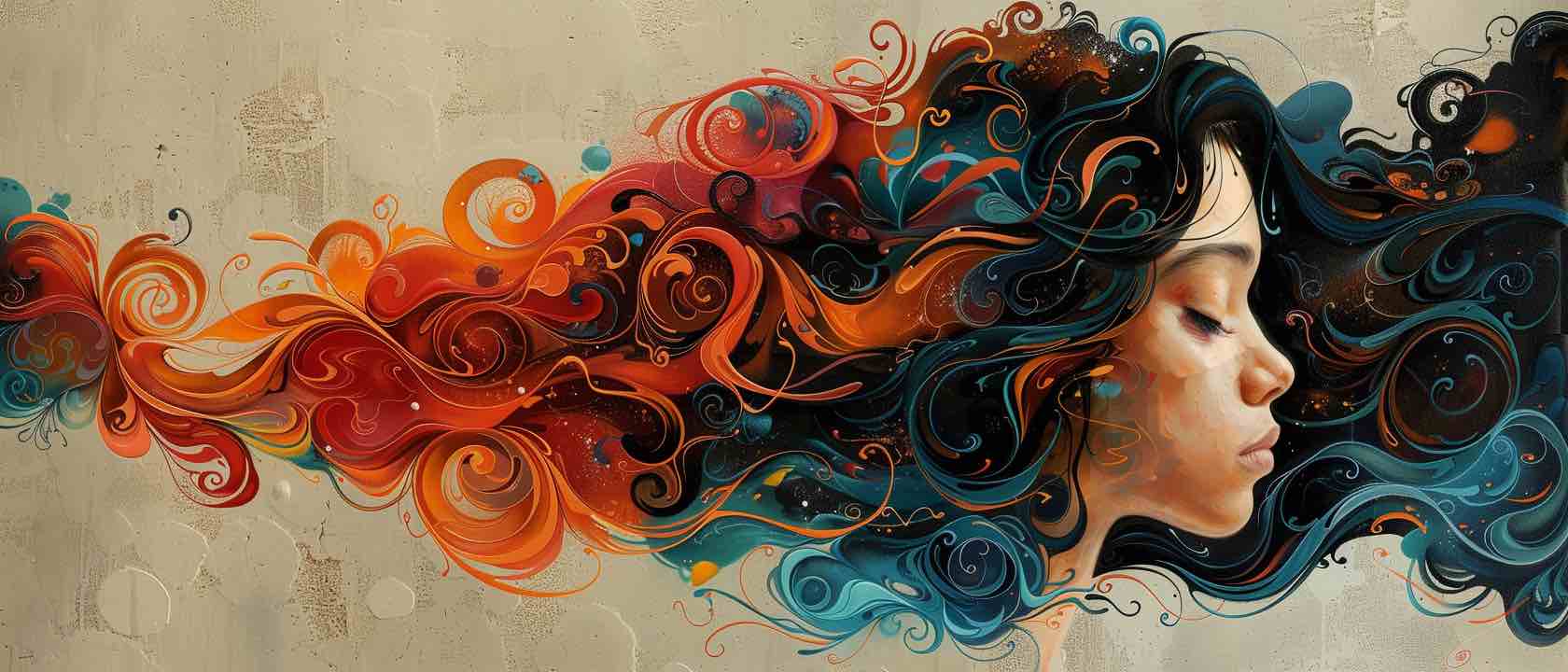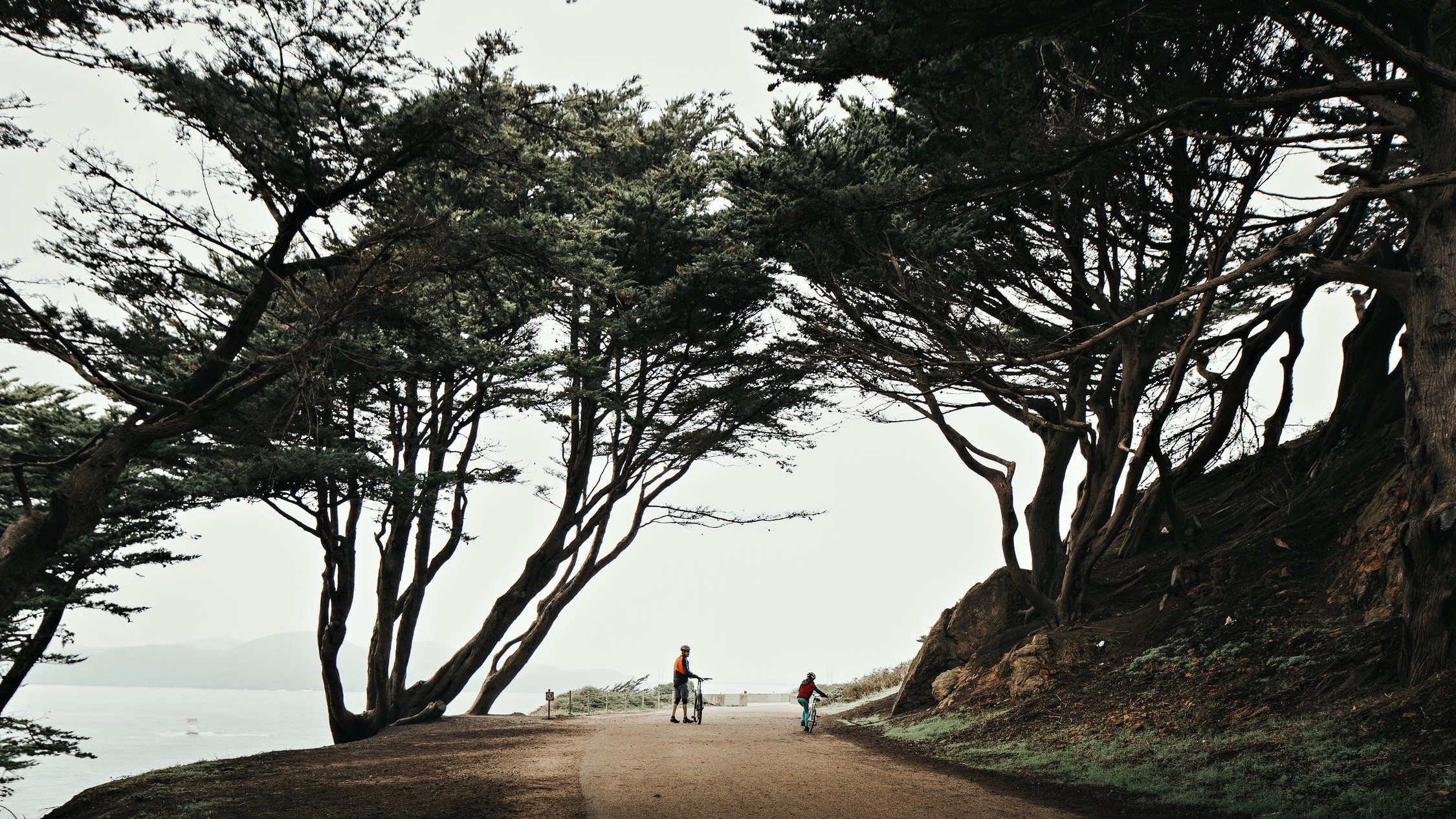Art is a diverse and ever-evolving form of human expression, encompassing a wide array of styles and techniques. In the contemporary art world, Modern Art has pushed the boundaries of traditional representation, often challenging conventional norms. Abstract Art departs from reality, using shapes, forms, and colors to evoke emotions and ideas. Impressionism, with its emphasis on capturing light and atmosphere, has given rise to a unique visual language that celebrates the fleeting beauty of nature. Pop Art reflects the consumer culture of the modern era, incorporating everyday objects and popular imagery into bold and colorful works. Cubism, pioneered by artists like Picasso, breaks down subjects into geometric shapes, offering a fresh perspective on reality.
Surrealism delves into the realm of dreams and the subconscious, combining unexpected elements to create thought-provoking and fantastical scenes. Fantasy art transports viewers to imaginative worlds, often inspired by mythology, folklore, and literature. Graffiti brings art to the streets, transforming urban landscapes with its vibrant colors and powerful messages. Photorealism astounds with its meticulous attention to detail, rendering subjects with such precision that they appear almost like photographs. Lastly, Dark Academia is an emerging aesthetic rooted in academia, literature, and the arts, often featuring moody, nostalgic, and mysterious themes. These popular art styles showcase the incredible range of creativity and expression found in the world of art today.
Creativity through art and other mediums is crucial for humankind for various reasons. It fosters personal fulfillment, and positive academic and professional outcomes, and can even be therapeutic. Creativity is an inherent part of our human drive, promoting resilience and sparking joy. It also helps us perceive the world in new and different ways, enabling us to create works of beauty and solve problems, ultimately refreshing our minds and positively impacting our health.
Moreover, creativity is essential for human development, allowing us to use our imagination to generate new ideas and objects. In a rapidly changing world, creativity contributes to personal satisfaction and societal growth, as it helps individuals adapt to new challenges and discover innovative solutions. By engaging in creative activities, people can achieve a state of flow, which is associated with improved mental health and overall well-being.
Welcome to today's blog post from Camps with Friends! In this exciting edition, we will delve into the top 10 most popular art forms of the current era. What sets this exploration apart is the unique blend of human and artificial intelligence at play. A staggering 99% of the "art" we will be discussing is AI-generated, with the remaining 1% originating from the creative mind of our author, Jason Mellet.
The decision to use the butterfly as the central inspiration behind all the art forms and artwork I generated was influenced by this unique creature's rich symbolism and its dynamic presence in nature. As a symbol of transformation, rebirth, and delicate beauty, the butterfly embodies many of the qualities one seeks to express in art. Its metamorphic journey—from a caterpillar to a spectacularly adorned creature—serves as a powerful metaphor for personal growth and development, a theme relevant across different cultures and time periods.
Furthermore, the endless variety of butterfly species, each displaying their unique colors, patterns, and shapes, provided a limitless source of creative inspiration to draw upon in developing diverse art forms. From intricate line drawings and vibrant paintings to textured sculptures and innovative installations, the butterfly's fascinating qualities and aesthetics could be harnessed and translated into a plethora of artistic expressions.
In sum, the choice to make the butterfly the cornerstone of my artistic creations was driven by its potent symbolism, its universal appeal, and the boundless possibilities that it offers for translating elements of its ethereal nature into a rich array of artistic manifestations.
But that's not all! The text you're reading is also AI-generated, showcasing the incredible potential of AI in the world of art and creativity. However, it's essential to note that the concepts, prompts, and direction all come from Jason himself. This fascinating collaboration between human ingenuity and artificial intelligence offers a fresh perspective on the artistic landscape and demonstrates the limitless possibilities when we embrace the synergy of human and machine creativity. So, let's dive in and explore the captivating world of AI-generated art forms!
Before the modern art era, various art forms and movements existed, reflecting the tastes, culture, and influences of their respective time periods. Some prominent art movements before the modern art era include:
Prehistoric art: This period encompasses the earliest known artworks, such as cave paintings and sculptures.
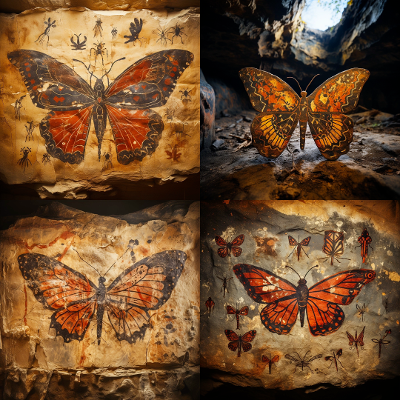
This image is The Butterfly as a Cave Painting.
Ancient art: This category includes ancient civilizations' artistic expressions, such as Egyptian, Mesopotamian, Greek, and Roman art.
Medieval art: This period ranges from the fall of the Western Roman Empire to the rise of the Renaissance and includes styles like Byzantine, Romanesque, and Gothic art.
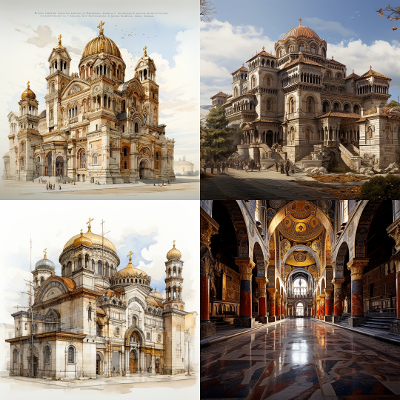
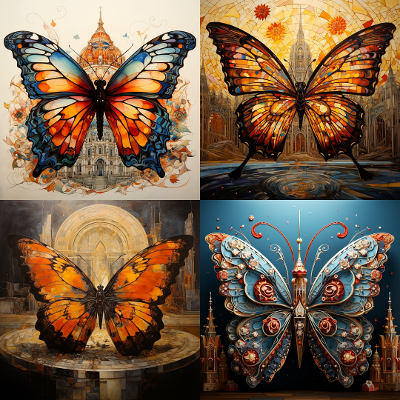
Image 1 is Byzantine Architecture, Image 2 is The Butterfly in Byzantine Architecture.
Renaissance art: Spanning the 14th to the 17th centuries, this period marked a cultural rebirth in Europe and led to the creation of iconic artworks by masters like Michelangelo and Leonardo da Vinci.
Baroque art: Emerging around the 1600s, this dramatic and elaborate style is exemplified by artists like Caravaggio and Rembrandt.
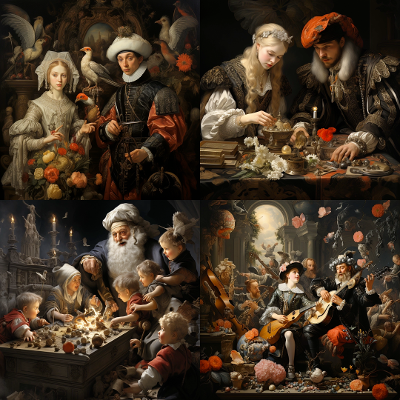

Image 1 is simply Baroque Art & Image 2 is a Butterfly in Baroque Art
Rococo art: A more nuanced and light-hearted style that followed the Baroque period, Rococo art is often associated with artists like Jean-Antoine Watteau and François Boucher.
Neoclassical art: This movement, which emerged in the 18th century, drew inspiration from ancient Greek and Roman art and focused on order, symmetry, and idealized beauty.

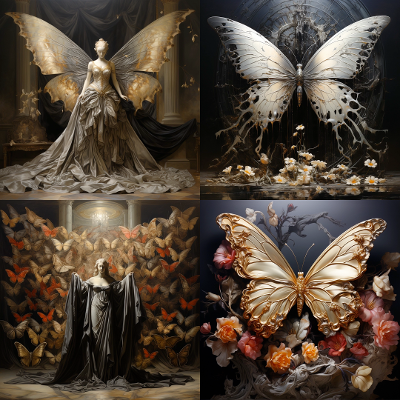
Image 1 is simply Neoclassical Art, and Image 2, The Butterfly is Neoclassical Art.
Romantic art: In the late 18th and early 19th centuries, Romanticism prized emotion, imagination, and the sublime, with artists like Francisco Goya and Eugène Delacroix spearheading this movement.
These historical art movements helped shape the landscape of art, paving the way for the modern art era that followed.
As we journey through the trajectory of art history, from the earliest cave paintings to the ethereal wonders of the Renaissance, and on to the extravagant drama of the Baroque period, we witness a fascinating evolution of visual expression. All these diverse art movements -- each with its unique ethos and aesthetic -- have not only shaped the artistic dialogue but also paved the way for new perspectives to emerge. As we leave behind the classical symmetry of Neoclassic art and the intense emotional appeal of Romanticism, a new chapter dawns. With the late 19th century comes a significant shift in perspective, breaking away from the established norms and traditions. Such changes in the artistic domain marked the initiation of the Modern Art era, a time characterized by radical innovation and a thrilling spirit of experimentation. Now, let's delve into this fascinating era's various forms, styles, and artists who dared to redefine the language of art.
1: Modern Art.
Modern art refers to artistic work produced during the period extending roughly from the 1860s to the 1970s, encompassing various styles and philosophies of art created during that era. The term is generally associated with art that breaks away from the traditions of the past in a spirit of experimentation. Modern art includes painting, sculpture, architecture, and graphic arts characteristic of the 20th and 21st centuries, as well as the later part of the 19th century. It represents an evolving set of ideas among numerous artists who sought new approaches to art-making, both individually and collectively.
Some famous artists known for practicing modern art include Jean-Michel Basquiat, Vincent van Gogh, Pablo Picasso, and Andy Warhol. These artists have made significant contributions to the modern art movement, with their innovative techniques and unique styles.
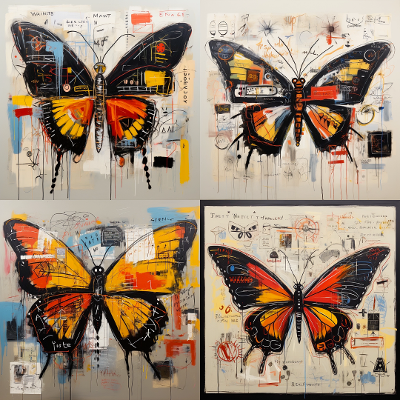
This image is The butterfly as if done by Jean-Michel Basquiat
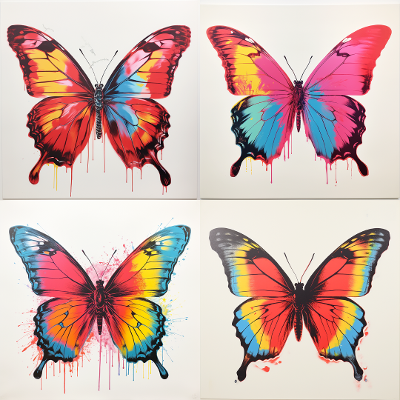
This image is The Butterfly as if done by Andy Warhol
Jean-Michel Basquiat was a prominent figure in the Neo-Expressionist movement, known for his raw, graffiti-inspired art. Vincent van Gogh, a Post-Impressionist painter, is celebrated for his vivid use of color and emotional intensity in works like "Sunflowers". Pablo Picasso, a pioneer of Cubism, revolutionized the art world with his groundbreaking painting "Les Demoiselles d'Avignon". Andy Warhol, a leading figure in the Pop Art movement, is famous for his iconic "Campbell's Soup Cans" series.
In creating a butterfly-inspired artwork in the unique style of Pablo Picasso, a pioneer of Cubism and one of the most influential artists of the 20th century, I found myself facing a unique challenge. Picasso's revolutionary approach, marked by fragmented forms and radical distortions, is not readily translatable using a conventional methodology and AI technology.
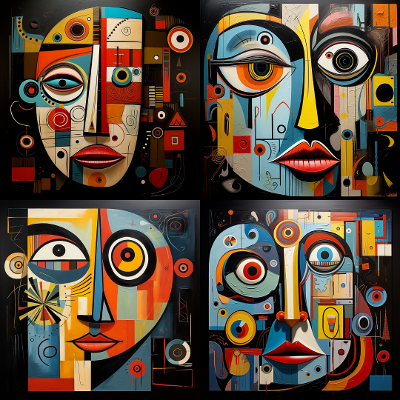
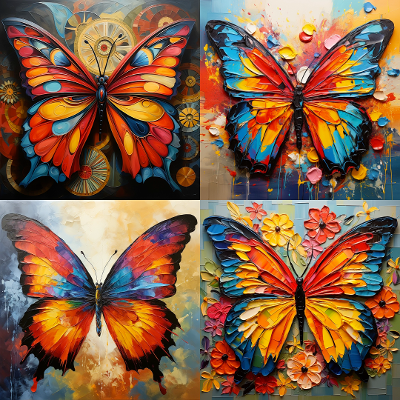
Difficulties arose in integrating the naturalistic shapes and intricate patterns of butterflies into Picasso's multifaceted, abstract style. This art-making process required a delicate balancing act of meshing the representational elements inherent in butterflies with the bold, abstract characteristics of Picasso's art.
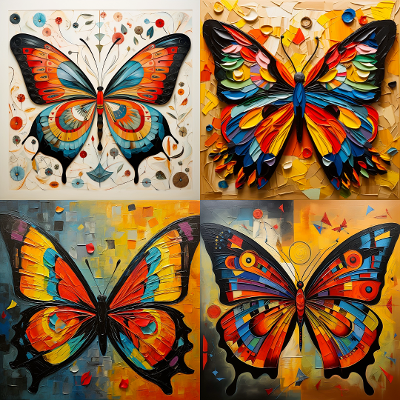

In this spirit of exploration and experimentation, I generated various interpretations before arriving at something that aligns with Picasso’s distinct style. Recognizing that this is an inherently subjective process open to individual interpretation, I decided to present several offerings. Each piece reflects a different take on how a butterfly could be rendered in Picasso's groundbreaking aesthetic.
I think in these last 2 versions, I finally started getting close to the same feeling you get from Picasso's art. Although much more work is still needed.
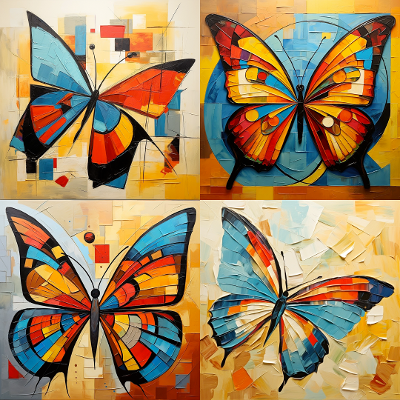
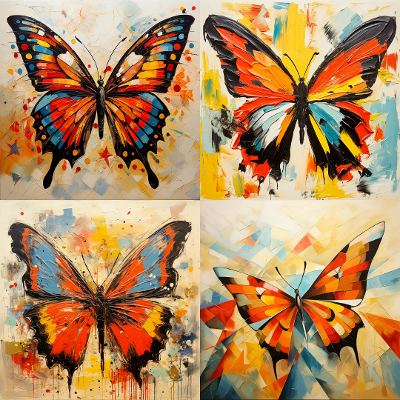
This project underscores both the complexities and the exciting possibilities inherent in the intersection of AI technology and visual art. It pushes the boundaries of artistic creation, forging new pathways for interpretations and representations.
2: Abstract Art.
Abstract art is a style of visual art that emphasizes the use of non-representational forms to create meaning and reality. It does not attempt to represent an accurate depiction of a visual reality. Instead, it uses shapes, colors, forms, and gestural marks to convey its effect. Abstract art emerged in the early 20th century with the avant-garde challenging the status quo of representational art.
Some notable artists who practiced abstract art are:
-
Wassily Kandinsky: Often regarded as the pioneer of abstract art, Kandinsky claimed to have created the first-ever abstract picture in 1911. He believed in the spiritual and emotive power of colors and forms, and his paintings sought to evoke a sense of harmony and balance. Below, art inspired by Wassily Kandinsky
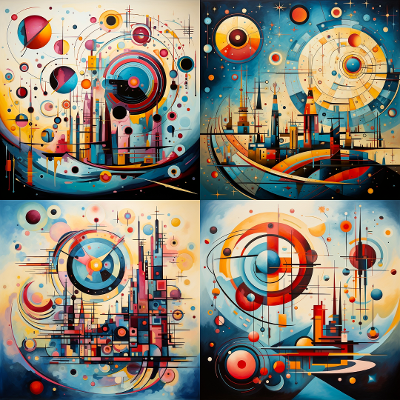
-
Piet Mondrian: A key figure in the De Stijl art movement, Mondrian is best known for his geometric abstract paintings featuring grids of primary colors. He pursued harmony and purity through the simplification of visual elements and the use of straight lines, right angles, and strict color palettes. Below, Inspired by Piet Mondrian
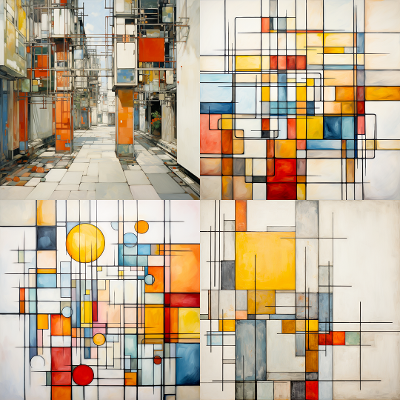
-
Kazimir Malevich: The founder of the Suprematist movement, Malevich championed pure abstraction and non-objective art. His most famous work, "Black Square" (1915), represented a radical departure from traditional art and aimed to express the essence of the 'supreme' non-objective world. Below, abstract art inspired by Kazimir Malevich
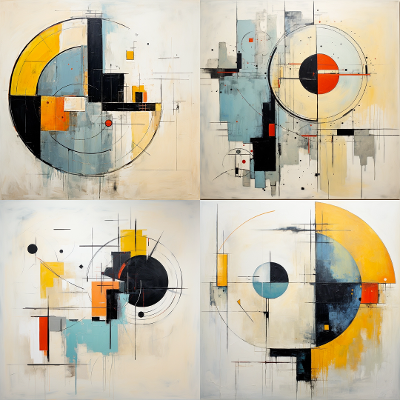
-
Jackson Pollock: An influential figure in the Abstract Expressionism movement, Pollock gained fame for his "drip paintings" in which he poured, splattered, and dripped paint onto large canvases laid on the floor. This technique underscored the physicality and spontaneity of the painting process and demonstrated a bold departure from traditional artistic practices. Below, Inspired by Jackson Pollock
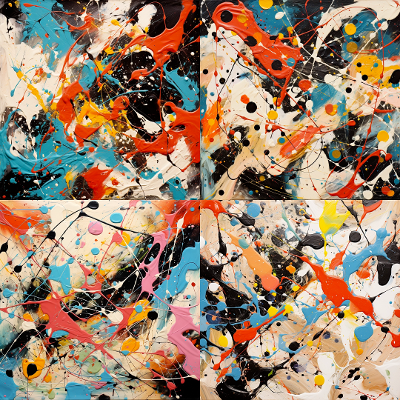
Creating abstract art that is inspired by or includes a definitive shape of a butterfly presents several challenges, primarily because of the inherent contrast between the recognizable form of a butterfly and the principles of abstraction.
-
A contradiction of abstraction's essence: Abstract art strives to break away from representing accurate depictions of visual reality and leans toward expressing emotional and conceptual ideas through the use of non-representational forms, colors, and shapes. Incorporating a definitive shape of a butterfly could risk compromising the essence of abstraction, as it reintroduces a recognizable form into a style that seeks to avoid or deconstruct such specific imagery.
-
Maintaining visual harmony: To effectively blend the naturalistic form of a butterfly with abstract principles, it's crucial to strike a balance between the recognizable shape and the broader composition. Doing so without overshadowing the abstract elements or diluting the butterfly's essence can be challenging. It demands a careful selection of colors, lines, and forms that highlight both aspects of the artwork harmoniously.
-
Preserving the intent behind abstraction: Abstract art often aims to evoke emotions or convey themes beyond the literal representation of a subject. Incorporating a definitive butterfly shape could potentially shift the focus of the artwork to a more literal interpretation, detracting from the intended emotional or thematic impact.
-
Reinterpreting the familiar: A compelling challenge in creating abstract art inspired by recognizable forms, such as a butterfly, lies in reinterpreting the familiar in fresh, innovative ways. It requires breaking down the subject into abstract elements and reassembling them to convey a new perspective while still maintaining a connection to the original inspiration.

This failed image is a butterfly in the style of Jackson Pollock. Beautiful, but a fail.
In summary, the difficulty in creating abstract art inspired by or including a definitive butterfly shape arises from the need to balance the recognizability of the subject with the core principles of abstraction while preserving the emotive and thematic impact of the artwork.
3: Impressionism. Pioneers, Innovation, and Impact in Art
Impressionism, originating in 19th-century France, revolutionized the world of art with its radical departure from conventional norms. Characterized by its capture of spontaneous moments, emphasis on the play of light, visible brushwork, and vibrant colors, Impressionism sought to represent the fleeting impressions of the real world rather than a stiff, photographic portrayal.
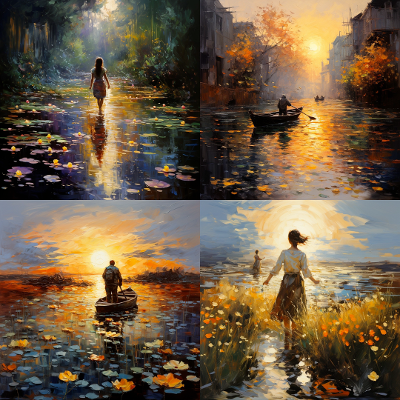
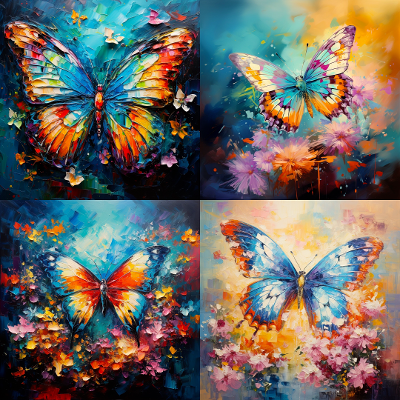
The birth of Impressionism was catalyzed by significant changes in French society. The Industrial Revolution, the burgeoning middle class, and the advent of portable painting equipment all fostered an environment conducive to new artistic exploration.
The movement spotlighted several notable artists, each profound in their distinct style and contribution.
Claude Monet, regarded as the father of Impressionism, pioneered the emphasis on capturing transient effects of light and color[^3^]. His painting, "Impression, Sunrise" (1872), from which the movement's name is derived, strikingly encapsulates the ephemeral interplay of light over a harbor.
Pierre-Auguste Renoir was known for his vivacious, light-infused scenes of leisure and portraits. His approach often highlighted the beauty and fleeting nature of life, with works like "Moulin de la Galette" (1876) marking a remarkable departure from formalities of portraiture.
Edgar Degas brought a unique perspective to Impressionism by infusing it with elements of Realism. Famous for his ballerinas, he used unorthodox angles and composition to harness dynamic intensity, tellingly observed in "The Dance Class" (1874).
Berthe Morisot, one of the few celebrated female Impressionists, depicted the intimate domestic life and subtle societal circumstances of women in her works. "The Cradle" (1872) presents a tender, intimate moment infused with her avant-garde technique.
During its inception, Impressionism faced significant backlash from traditionally-aligned critics. Its apparent insouciance towards ‘finished’ artworks and aberration from academic standards were initially frowned upon. However, with thyme, the movement gained appreciation for ushering in free artistic expression and for its unique aesthetics.
The legacy of Impressionism extends beyond its era, profoundly influencing successive movements like Post-Impressionism and Expressionism. Artists worldwide continue to draw inspiration from this incomparable style. The deep-rooted love for Impressionist works among museums, collectors, and art lovers today testifies to its undeniable, enduring impact on the world of art.
The Impressionists' brave insubordination of conservative aesthetics incited a revolution that thrust art into modernity. In the artists' attempts to capture their impressions came authentic mirrorings of human life, forever transforming the artistic landscape.
4: Pop Art: A Movement in Bright Colors and Bold Statements
Pop Art, an art movement that commenced in the mid-1950s in the UK and the US, is defined by its bold challenge to traditional fine art values by incorporating popular and mass culture. Common motifs were derived from advertising, comic books, and mundane cultural objects, making a critical or ironic comment on the traditional art world.
The rise of consumer culture in post-war America and Europe combined with a growing disillusionment with elitist culture spawned Pop Art. Capitalizing on the pervasive mass media and commercial aesthetic, Pop Art strived to blur the boundaries between high art and low culture.
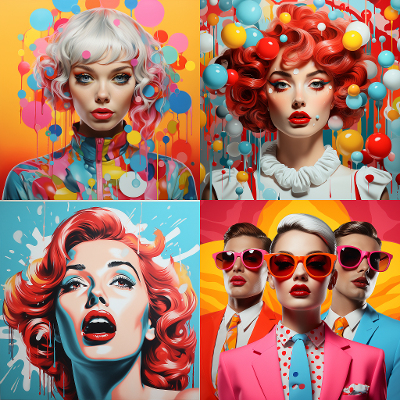
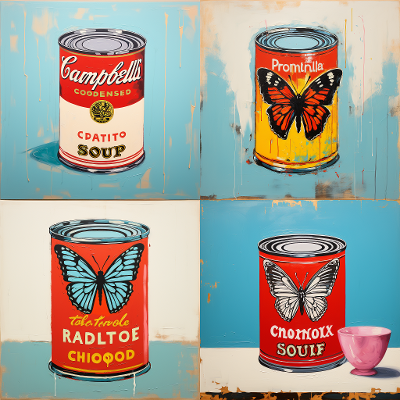
Several trailblazing artists are associated with this movement:
- Andy Warhol is arguably the most iconic figure of Pop Art. Known for his influence on contemporary visual culture, Warhol shifted the boundaries of what art could be. His works, like "Campbell's Soup Cans" (1962), repurposed mass-produced imagery, often emphasizing the banal and kitschy elements of American culture.
- Roy Lichtenstein endeavored to challenge the division between high and low art with his comic book-style imagery. His works, like "Drowning Girl" (1963), are known for their satirical and often tongue-in-cheek approach.
- Jasper Johns, although more complex and diverse in his work, contributed to Pop Art's development by incorporating mundane emblematic images into his work. His series of Flag paintings served as a commentary on American patriotism.
- Richard Hamilton, a British artist, is often credited with being one of the first to produce pop art. His piece "Just what is it that makes today's homes so different, so appealing?" (1956) represents the optimistic dream of affluent post-war domestic life.
Initially met with skepticism and even hostility, Pop Art ultimately gained acceptance by drawing attention to the overlap between everyday life and art, challenging traditional boundaries and definitions. It wrestled with the idea of the artist as a producer, playing with mass production, celebrity culture, and the rising consumerist society.
Pop Art has left an indelible mark on the art world. It influenced movements like Neo-Pop in the 1980s, headed by artists like Jeff Koons, and continues to inspire contemporary artists. Today, Pop Art's impact can be seen in advertising, comic books, and various forms of multimedia art.
In conclusion, Pop Art was more than an art movement; it was a cultural shift. Combining irreverence, satire, and daring aesthetics, it firmly embedded itself in the landscape of art history, forever altering our perception of what could and should be called "art."
5: Cubism: Fragmenting the Conventional Perspective on Art
Cubism, a groundbreaking art movement pioneered in the early 20th century, aimed to depict a more comprehensive representation of reality by breaking down objects and landscapes into geometric forms and reassembling them from multiple angles. This radical reinterpretation of perspective has profoundly impacted the course of modern art.
Emerging from the ashes of traditional artistic norms, Cubism was a rebel with a cause. Begun around 1907 by Pablo Picasso and Georges Braque, it was a rejection of the single viewpoint. Over time, Cubism evolved from the more severe "Analytic" phase, dominated by monochromatic palettes and complex, layered forms, into the colorful, playful "Synthetic" phase, marked by collage techniques.
Among the trailblazers of this movement were:
- Pablo Picasso, according to art historians, was the trailblazer who triggered the Cubist movement with "Les Demoiselles d'Avignon" (1907). This controversial artwork deconstructed the conventional female form into geometrical pieces and stunned the art world with its unabashed departure from naturalistic representation.
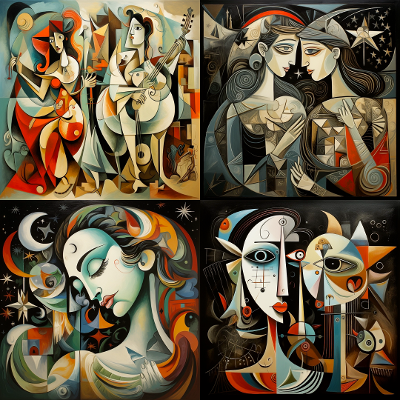
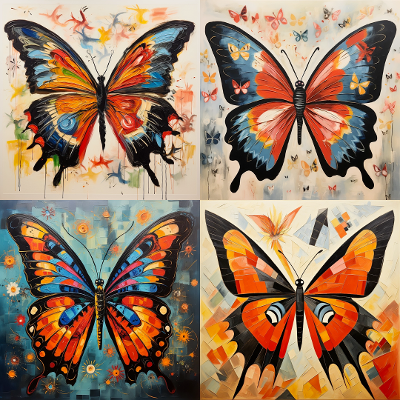
- Georges Braque, closely aligned with Picasso, co-developed the analytic phase of Cubism. His work "Violin and Candlestick" (1910) typifies the exploratory spirit of Cubism’s deconstruction of three-dimensional objects into abstract, geometric forms.
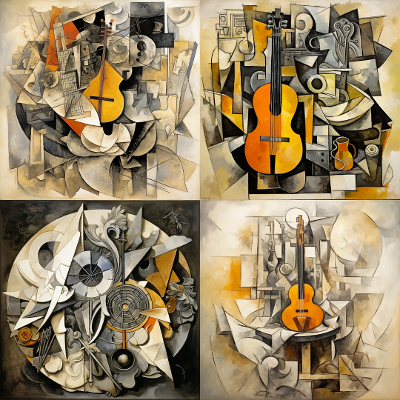
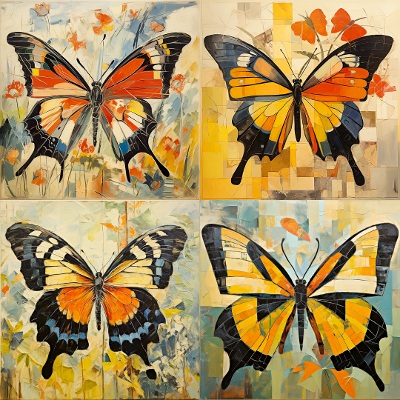
- Juan Gris, a later adherent, was known for his contributions to Synthetic Cubism. His piece "Still Life with Checked Tablecloth" (1915) exhibits his mastery of integrating collage elements and a wider color palette into the Cubist aesthetic.

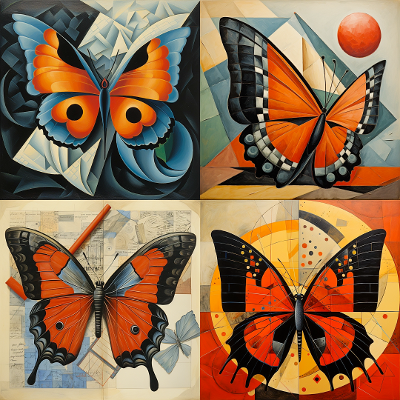
Cubism shattered traditional art norms, propelling the art world into a realm of the avant-garde. Its genre-bending style ushered in an era of abstract art, influencing movements as diverse as Futurism, Constructivism, and even Dada.
In summary, Cubism was self-evidently transformative. Through its novel approach, it offered not just a new way to see the world, but a new way to understand it. From Picasso’s challenging forms to Gris’s playful collages, Cubism ceaselessly pushed the boundaries of artistic expression, forever changing the landscape of modern art.
In reflection, we encourage readers to delve deeper into the Cubist masterpieces and discover how these pieces challenge your perception. By looking beyond the surface, one can appreciate the complex layers of meaning hidden within the geometric forms and experience the multi-faceted view of reality that Cubism sought to represent.
6: Surrealism: Delving Into the Realm of the Unconscious
Surrealism, an artistic and literary movement that emerged in the 1920s, bridged the line between reality and dreams, logic and irrationality. Born from the ashes of the Dada movement, Surrealism aimed to explore the unconscious mind's depths, freeing creativity from societal norms. This article delves into the realms crafted by prominent Surrealist artists Salvador Dali, Max Ernst, René Magritte, and Leonora Carrington.
- Salvador Dali, born in 1904 in Spain, was deeply influenced by the works of Freudian psychoanalysis. His Surrealist journey commenced with painting dreamscapes and incorporating visual puns, hallucinatory visions, and unsettling landscapes. Dali's "The Persistence of Memory" (1931) is an iconic depiction of melting watches, symbolizing the mutability of time. Magic realism, another famous Dali style, is exemplified in "The Elephants" (1948) – a stunning painting of towering, spindly-legged pachyderms. As one of Surrealism's most famous figures, Dali's contributions amplified the movement's global influence, legitimizing it as a significant cultural force. Below are butterflies inspired by Dali.
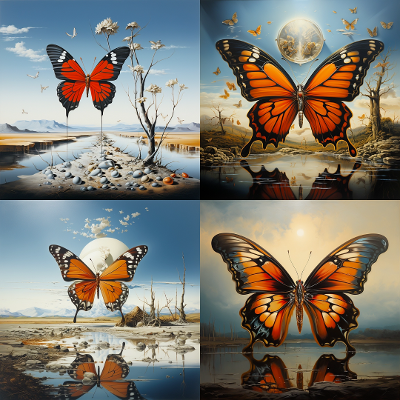
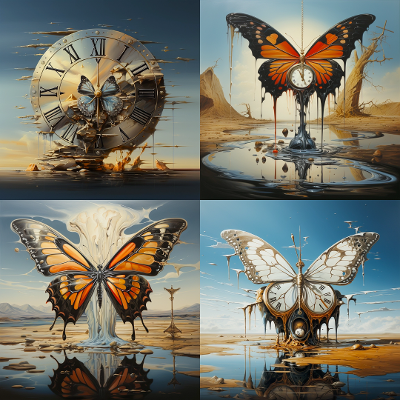
- Max Ernst sought refuge in art during his experiences in World War I and soon joined the Dada movement, eventually embracing Surrealism after exploring Sigmund Freud's theories. Frottage, grattage, and decalcomania – texture creation techniques using unconventional tools – became Ernst's signature methods. "The Elephant Celebes" (1921) is a prime example of Ernst's inventive juxtaposition of imagery. This painting features an enormous mechanized elephant juxtaposed with African tribal masks, an homage to African art sources. As an early pioneer of Surrealism, Ernst's works were instrumental in defining the movement's provocative visual techniques and expansion. Below, is a butterfly inspired by the art of Max Ernst.

- René Magritte, the Belgian Surrealist, possessed a fervent desire to sabotage the ordinary, challenging viewers' perceptions with wordplay and visual puns in his artwork. Representative of Magritte's exploration of the relationships between objects and their representation is "The Treachery of Images" (1929), which features a beautifully rendered pipe below the text "Ceci n'est pas une pipe," or "This is not a pipe" in French. Magritte's thought-provoking works and distinctive style played a crucial role in shaping the course of Surrealism and elevating it as an art movement. Below is a butterfly inspired by René's famous piece known as " This is not a pipe ".

- Leonora Carrington, the British-born painter, was inspired by ancient mythology, alchemy, and the occult. Her fantastical works reflect a unique, feminist perspective within Surrealism, blurring the boundaries of myth and reality. One of her most notable works, "The Pomps of the Subsoil" (1947), incorporates a world of anthropomorphic animals and mystical creatures in a dreamy, symbolic narrative. Carrington's identity as a female Surrealist broadened the narrative, establishing her as an essential figure in the movement and challenging the gender norms of her time. Below is a Leonora Carrington-inspired butterfly.
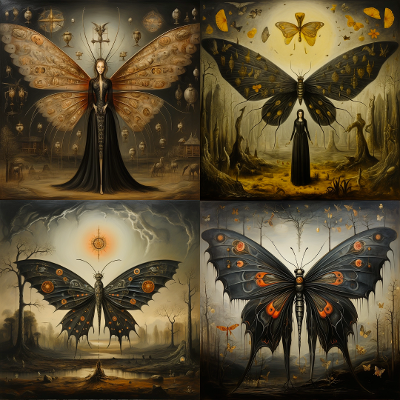
In conclusion, the impact of Surrealism continues to permeate the art world, allowing emotions, dreams, and the unconscious to find a voice in creative expression. Salvador Dali, Max Ernst, René Magritte, and Leonora Carrington, among others, redefined the limits of imagination and transformed the landscape of Modern Art.
As we reflect on their exceptional contributions and the undeniable influence of Surrealism, we're reminded of the power of artistry and the resilience of the human spirit in breaking through the conventional boundaries of thought.
7: Fantasy Art: Unleashing the Imagination
Fantasy art, with its uncanny creatures and mythical landscapes, serves as a gateway to realms beyond reality. Steeped in richness, fantasy art has a long history of captivating audiences and shaping culture.
The Origins of Fantasy Art
Fantasy art traces its roots back to mythology and folklore, with ancient civilizations using imaginative depictions to tell stories and explain the world around them. In the 20th century, there was a resurgence in fantasy art, largely attributed to the publication of J.R.R. Tolkien's "Lord of the Rings" series. Artists began creating fantastical book covers and illustrations, bringing the world of Middle-Earth to life.
The Importance of Fantasy Art
Fantasy art holds a mirror to society, allowing us to explore and challenge our norms and boundaries. It plays a major role in pop culture, influencing film, gaming, and literature. Movies like "Harry Potter" and "Avatar," and games like "World of Warcraft," bear testament to its profound impact. This genre has the power to inspire artists and creators across fields, expanding the horizons of imagination.
Major Artists in the Field
In the pantheon of fantasy art, artists like Frank Frazetta, Yoshitaka Amano, and H.R. Giger have left indelible marks.
An example of Fantasy Art:
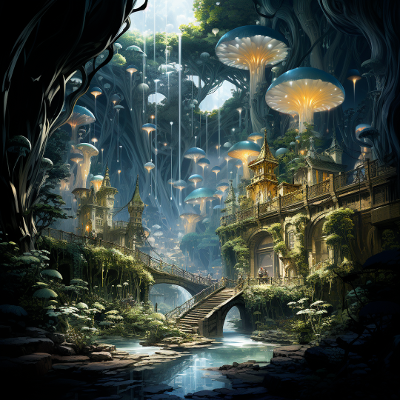
- Frank Frazetta, known as the 'father of fantasy art,' revolutionized the genre with his imaginative and dynamic artworks. Famous for his book cover art, one of his most notable works is "The Death Dealer" - a menacing, armored figure atop a horse that has captivated audiences for decades.
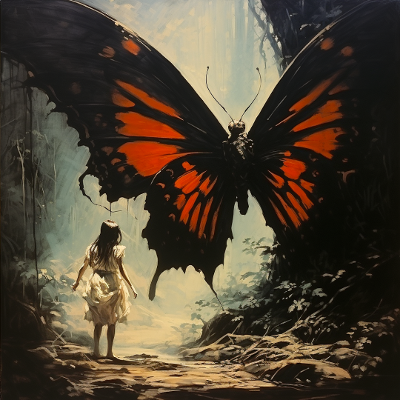
- Yoshitaka Amano, a Japanese artist, is renowned for his ethereal and unique style. He is best known for his character and environment designs for the "Final Fantasy" video game series.
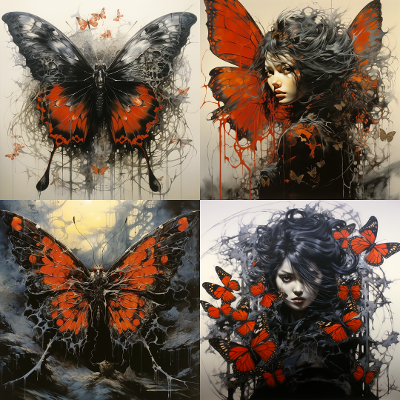
- H.R. Giger, a Swiss artist, brought a biomechanical, surrealist interpretation to the art of fantasy. His design for the creature in the "Alien" film series remains one of the most iconic in science fiction.
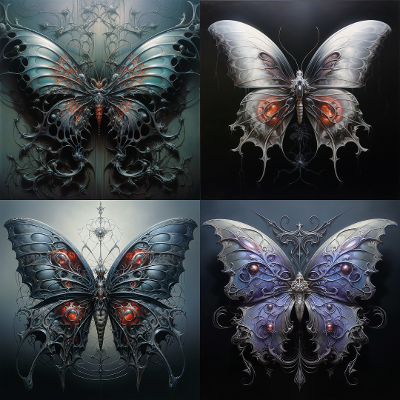
Evolution of Fantasy Art
From mythical creatures on cave walls to digital art, fantasy art has evolved dramatically over the centuries. The advent of technology has expanded the canvas for artists to unleash their creativity. The influence of technology has also led to new sub-genres like cyberpunk and steampunk. Changing cultural attitudes are diversifying representations in fantasy art, encouraging artists to explore progressive themes and narratives. See Afro-Futurism.
There's no knowing what unexplored realms and fantastic creatures lie waiting in the future of fantasy art, but one thing's for sure - fantasy art will continue to thrive and inspire, pushing the boundaries of imagination.
Fantasy art captures the boundless power of creativity and imagination. It has shaped and been shaped by every form of human expression, from ancient mythology to today's digital media. The brushstrokes of fantasy artists not only create portals to other worlds but also leave an indelible imprint on our culture. In the words of H.R. Giger, "Art makes visible the visions and dreams of humans."
8: Graffiti Art and Its Pioneers
Graffiti art serves as a subversive voice that echoes through city streets, turning walls and tunnels into canvases for public discourse. Today, graffiti is celebrated as a vibrant form of visual expression that straddles the boundary between rebellion and artistry.
The Origins of Graffiti Art
Early forms of graffiti art were fundamentally tied to hip-hop culture and street activism, dating back to the late 1960s and early 1970s. Born in New York City's urban landscape, graffiti art initially served as a way for marginalized youth to claim territory and voice social commentary.
Breaking the Rules: The Rise of Graffiti Art
During the 1970s and 1980s, graffiti art ascended from an urban anomaly to an influential art form. Artists like Keith Haring, Jean-Michel Basquiat, and Fab 5 Freddy propelled this ascent.
Examples of Graffiti Art.
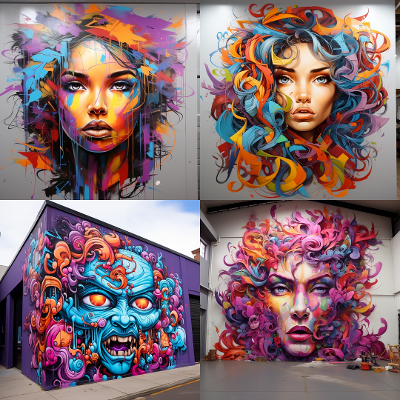

In this fascinating exploration of the world's leading artistic influencers, I had a blast delving into the kaleidoscopic and poignant realm of graffiti art, where the captivating works of Haring, Basquiat, and 5 Freddy truly took my breath away. Keith Haring's masterful blend of whimsical, vibrant figures and poignant social commentary reflects the artist's commitment to raising awareness of pressing issues in our society. The tragic genius of Jean-Michel Basquiat, who catapulted to fame for his raw and expressive artwork, can be seen in the pulsating energy of his graffiti that melds words, images, and symbols to provoke thought and discussion on an array of complex themes.
Then, there's the ebullient sheer force of Fab 5 Freddy, a veritable virtuoso who helped pioneer the merging of graffiti art with hip-hop culture, forging an unforgettable visual aesthetic that still resonates with audiences today. In unearthing the vibrant stories and impassioned expressions of these three trailblazing artists, I was enlightened, entertained, and utterly inspired by the indelible impact that graffiti art has had on both our cultural consciousness and the world of art. It was a thrilling and transformative journey that left me eager to continue discovering more about the dynamic and powerful contributions of these remarkable artists and their revolutionary mediums.
- Keith Haring
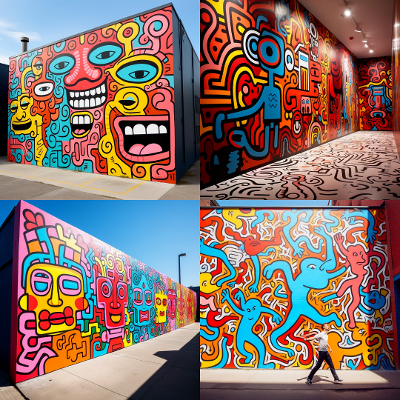

- Jean-Michel Basquiat

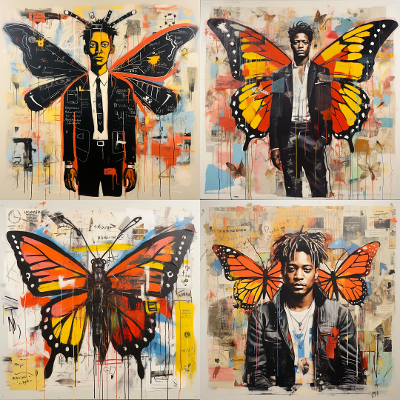
- Fab 5 Freddy propelled this ascent
I struggled a bit with Freddy, everything I produced always came out with his face as the main theme of the image. I think you will still get the point though with these examples.

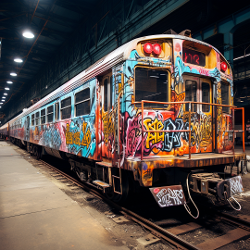
Haring's radiant child figures and barking dogs filled New York City's subways, bridging the gap between high and low art. Basquiat, starting as a street artist under the pseudonym SAMO, gained recognition for his provocative commentary on race, power, and poverty. Fab 5 Freddy (Fred Brathwaite) innovatively merged his graffiti work with the burgeoning hip-hop scene.
The Golden Age of Graffiti Art
Graffiti art's golden age blossomed in the 1990s, buoyed by urban artists like Banksy, Futura 2000, and Lady Pink. Guerilla artist Banksy gained global notoriety for his sarcastic, politically charged works. Futura, known for his abstract style, expanded graffiti's reach into the fashion world, collaborating with brands like Nike and Supreme. Lady Pink, one of the initial female street artists, defied gender norms and championed women's visibility in the graffiti scene.
Graffiti Art Today
Despite graffiti's evolution, it hasn't lost its edge. Contemporary artists like Shepard Fairey, Blu, and Os Gemeos have kept graffiti's spirit of dissent alive.
Fairey is best known for his "Obey Giant" campaign and Barack Obama's "Hope" poster, showcasing the power of street art in political discourse. Italian artist Blu pioneered muralism, using his large-scale works to critique capitalism and environmental destruction. Brazilian twins Os Gemeos are revered for their yellow-skinned characters that reflect urban life and Brazilian folklore.
Digital technologies have broadened the genre's possibilities, inviting an era of spray-free graffiti. Moreover, numerous street art festivals worldwide, like Upfest in Bristol or the Mural Festival in Montreal, are celebrating this art form and shaping urban landscapes.
Transcending its origins on city walls, graffiti art has left an indelible imprint on art, politics, and culture. Its bold, rebellious streak has inspired generations of artists, forever transforming the way we engage with public spaces. As we admire a cityscape adorned with graffiti or browse through digital murals, we witness not just the enduring impact of graffiti art, but the power of visual storytelling.
9: Decoding Photorealism: An Artistic Snapshot
Photorealism, a genre that projects the intricacies of a photograph onto the canvas, has left an indelible imprint on the art world. This art movement is celebrated for its precision, detail, and meticulous devotion to replicating reality.
History of Photorealism
Photorealism emerged in the late 1960s and early 1970s in the United States. Pioneered by artists like Richard Estes and Chuck Close, photorealism challenged the expressive abstraction which dominated the preceding decades. Its rise coincided with the growing accessibility of photography, leading artists to create artworks that resembled high-resolution photographs.
Richard Estes, known for his cityscapes, showcased the reflective potential of glass and polished surfaces in works like "Telephone Booths". Chuck Close pushed the boundaries of photorealism, focusing on oversized, close-range portraits such as "Big Self-Portrait".
Techniques and Characteristics of Photorealism
Photorealism is characterized by meticulous detail, texture, convincing interplays of light and shadow, and an emphasis on surface description. Artists often use photographic slide projections or multi-layered grid techniques to translate photographs onto the canvas.
For instance, Close's technique involved applying a grid to both the photo and the canvas, painstakingly replicating each cell onto the painting. This method results in hyper-detailed and multi-faceted portraits — optical puzzles of color and form.
Top Artists in Photorealism
While Close and Estes dominated the early photorealist scene, numerous contemporary artists carried the photorealist torch.
- Robert Bechtle, a San Francisco-based artist, gained acclaim for his suburban scenes that balance the mundane with an element of narrative intrigue. His piece "Alameda Gran Torino" is an emblem of his style: an everyday scene rendered with striking clarity.
- Audrey Flack was instrumental in integrating photorealism into the realm of still life. Her work, such as "Banana Split Sundae," combines extreme precision with symbolic depth, encouraging the viewer to question the reality behind the objects.
- Raphaella Spence is a leading figure in contemporary photorealism. Her luminous, highly-detailed landscapes, like "Trevi", exhibit an almost surreal quality of light, showcasing how photorealism continues to adapt and evolve.
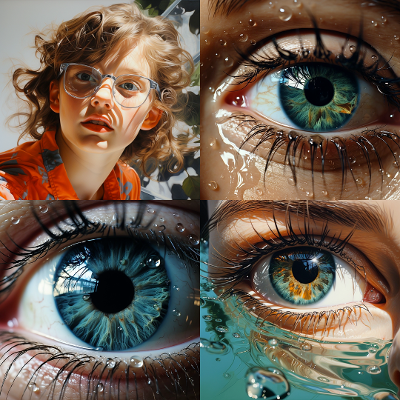
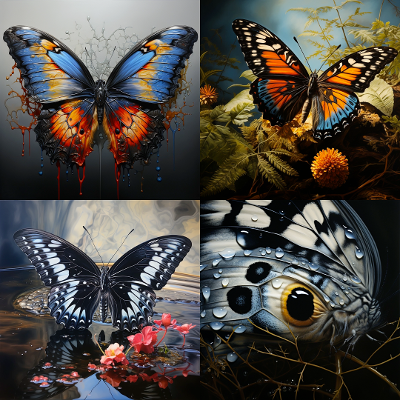
The legacy of photorealism, from its 20th-century pioneers to contemporary masters, showcases the enduring appeal of this art form. As we continue to push the boundaries of artistry and technology, photorealism remains both a testament to artistic skill and a mirror reflecting our evolving world.
10: Delving Into the Shadows: The Allure of Dark Academia
Imagine a world steeped in mystery, ancient literature, vintage fashion, and a perpetual yearning for knowledge. This intriguing realm isn't a distant land, but a cultural aesthetic known as Dark Academia. This blog post untangles the enigmatic threads of Dark Academia, tracing its origins, characteristics, and key figures that have shaped this captivating movement.
Origins of Dark Academia
Dark Academia arose from an amalgamation of rich historical references, literature, and an appreciation for erudition. It's reminiscent of Gothic and Romantic literature and reflects the intellectual ambiance of elite educational institutions. Rooted in European culture and classical antiquity, it sets itself apart from other aesthetics by its profound adoration for learning and the arts.
Characteristics of Dark Academia
Visually, Dark Academia weaves a tapestry of antiquity and intellect. Fashion involves tweed trousers, turtlenecks, wool blazers, plaid skirts, and an overarching palette of black, brown, and beige. Aesthetically, it favors old libraries, stone architecture, cobbled streets, candlelight, and vintage stationery.

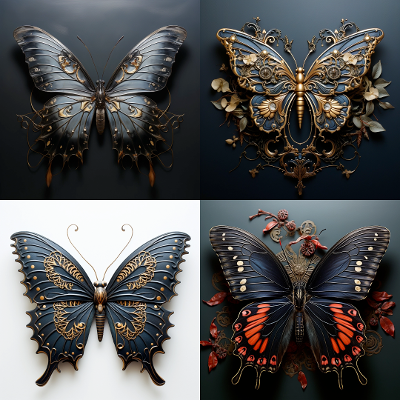
Thematically, it values knowledge, critical thinking, and interpersonal relationships. It finds beauty in academia, literature, philosophy, and the arts. However, it also deals with themes of existentialism, death, and the moral implications of obsession with aesthetic and intellectual perfection.
Key Figures in Dark Academia
Dark Academia doesn't just exist in fashion and visuals. It thrives in literature and films, from Donna Tartt's "The Secret History", with its college setting, classical references, and murder mystery, to films like "Dead Poets Society" and "Maurice" that embody the aesthetic's academia, vintage fashion, and profound themes.
Several influencers have shaped the Dark Academia aesthetic on social media, including Naomi [@herboreads] and Oscar [@freckledbibliophile] on Instagram, showcasing academic pursuits, vintage fashion, and classic literature.
Dark Academia, an aesthetic that positions itself at the intersection of intellect and creativity, serves as an evocative journey into a world of vintage fashion, old literature, and the quest for knowledge. Prominent figures in literature and social media have brought the aesthetic to life, highlighting its allure and cultural significance. In an era of rapid digitalization, the timeless appeal of Dark Academia serves as a nostalgic escape. So why not swap your digital devices for a classic novel, don your tweed blazer, and immerse yourself in this intriguing world?
Recapping Art Forms: A Celebratory Ode To Creativity
From the brush strokes of classic painting and the exquisite eye of photography to the measured rhythm of dance and the emotional range of film, art in all its forms has been a powerful expression of emotion and human experience. Over the course of this article, we've taken a journey through the top 10 most popular art forms currently and throughout modern history, savoring each one's unique contribution to our vibrant cultural tapestry.
Art, an undeniable force of nature, has been and continues to be a potent mechanism for storytelling, rebellion, comfort, and exploration. By breaking down the different art forms—painting, sculpture, literature, film, music, photography, dance, theatre, architecture, and digital art—we've unraveled the complexities and beauties inherent in each discipline. These forms, whether they emerged from antiquity or were conceived in the digital age, form the backbone of our cultural and creative expression. They shape our perception of the world, influence societal norms and, at their core, reflect the kaleidoscopic nature of human experience.
Creative endeavor in any form is an audacious act of bravery, a declaration of presence to the world. Whether it's the timeless grace of a dancer, the powerful words of literature, or the mesmerizing architecture of our cities, every art form is a testament to human resilience and imagination. The innovation and diversity we've explored on our journey not only paint a vibrant landscape of our shared past but light a beacon for our collective future, exemplifying art's ability to adapt, inspire, and endure.
Throughout the decades, iconic figures have graced each art form, leaving indelible impressions and ever-evolving blueprints for others to follow or reinvent. From artists like Pablo Picasso and Frida Kahlo to authors such as Jane Austen and Gabriel García Márquez, actors like Marilyn Monroe and Denzel Washington, architects such as Zaha Hadid and Frank Gehry, and musicians like Johann Sebastian Bach and Beyoncé; they all play symphony of impact and legacy.
As we conclude the last strokes of this vibrant conversation, let's remember the crucial role that art plays in our lives. Each art form holds up a mirror to society, fostering understanding amongst diverse populations and encouraging us to question our established norms. It prompts dialogue, provokes thought, and in its most resonant form, sparks change.
In the embrace of art, we find unity. In its narrative, we unearth empathy. And within its sphere, we revel in the boundless palette of human emotion. As we continue to chart our path forward, let's carry with us the appreciation for art in all its forms. Imbibe it, celebrate it, and let it serve as a compass guiding us toward deeper understanding, appreciation, and connection. In the echo of a melody, the twist of a narrative, or the dance of a brush on canvas, we continue to witness the magic art forms spin, one masterpiece at a time.

